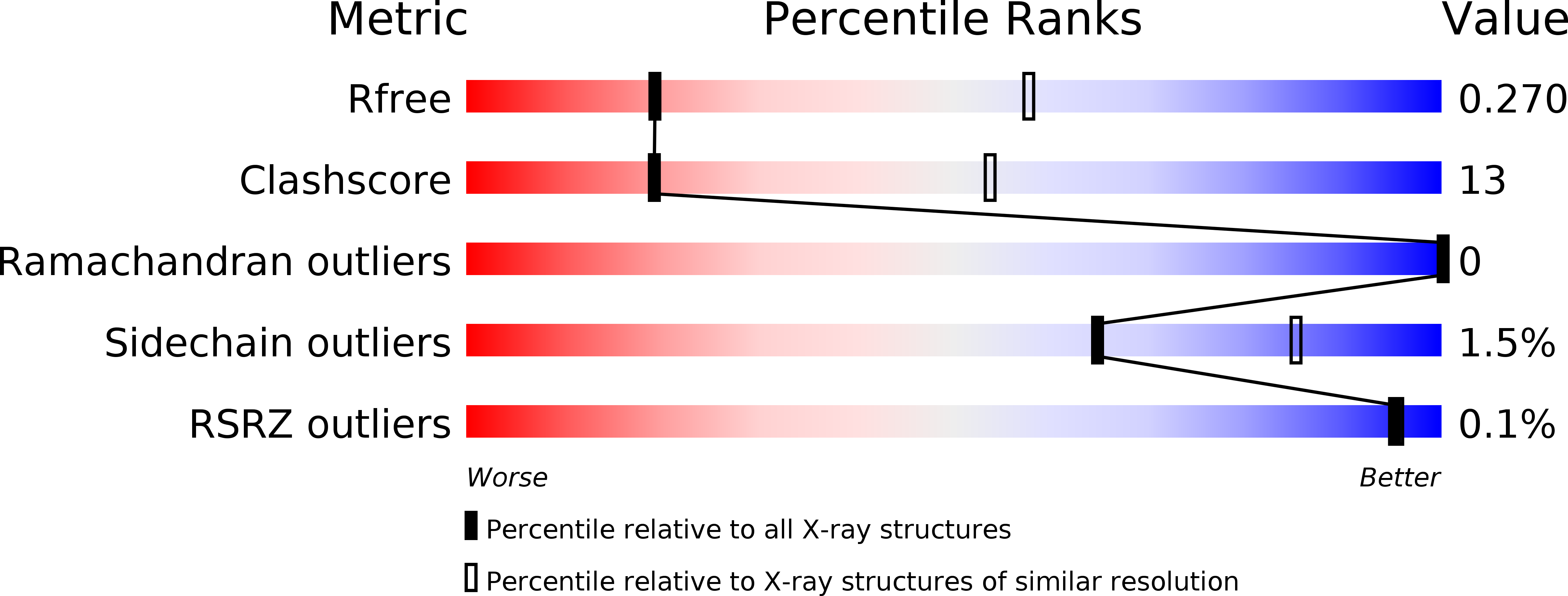
Deposition Date
2016-01-06
Release Date
2016-11-16
Last Version Date
2023-09-27
Entry Detail
PDB ID:
5HEV
Keywords:
Title:
Crystal Structure of the beryllofluoride-activated LiaR from Enterococcus faecium
Biological Source:
Source Organism:
Enterococcus faecium SD3B-2 (Taxon ID: 1244155)
Host Organism:
Method Details:
Experimental Method:
Resolution:
3.19 Å
R-Value Free:
0.27
R-Value Work:
0.21
R-Value Observed:
0.22
Space Group:
P 31


